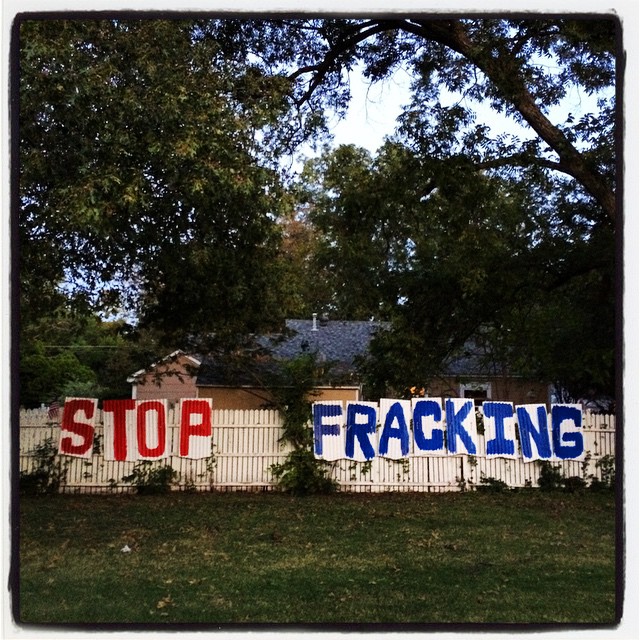The fracked gas industry, already on the ropes financially, has cratered in the pandemic. At the same time, its public support is tanking. This convergence of trends—financial pressure and public skepticism—could spell trouble for at least two big export-oriented fossil fuel proposals in the Northwest that would use vast quantities of gas: the methanol refinery project in Kalama, Washington, and the Jordan Cove LNG project in Coos Bay, Oregon.
The decade-long fracking boom that unleashed vast quantities of gas is now fizzling out, doused by a sea of red ink. As evidence mounts that fracking is extremely harmful to the environment and risky for public health, the gas industry seems to be losing the contest for public opinion. In an election year no less.
Nationwide in the United States, public opinion has grown skeptical of fracking. Gallup public opinion polling has documented the trend well: in 2015 Americans were evenly split on their support or opposition to fracking. But by 2016 Americans opposed it by an 11-point margin, a figure that widened to 18 points in opposition by 2017. The Pew Research Center documented the same shift in public opinion over the roughly the same period, as fracking fell out of favor.
Just a decade after the fracking boom started with clear majority support, there is little good news to be found in the poll for the gas industry. An August 2019 Associated Press-NORC poll found that only 22 percent of Americans support increasing fracking while 45 percent oppose increasing it. And, a YouGov Blue poll in September 2019 found that registered voters support a ban on fracking by 46 to 33 percent.
Poll numbers like these have already influenced candidates’ positioning in both state primaries and the US general election. Based on horse race polling, there’s no discernible electoral disadvantage for candidates who take a tough stance on fossil fuels, even in swing states—and even in swing states where fossil fuels loom large, like Ohio, the nation’s fifth-biggest gas producer, and Texas, the nation’s leading gas producer.
And no swing state may be more important than Pennsylvania, where the industry cranks out over 6 trillion cubic feet of natural gas annually—a volume that ranks second in the country and ahead of eight OPEC nations. In January 2020, a Franklin and Marshall College poll found that voters in the Keystone State favor a ban on fracking by 48 percent to 39 percent.
In fairness, the same poll showed also found that slightly more voters support “shale drilling” than oppose it, although it is important to note that this language is opaque and favorable to the industry and that these results were well within the poll’s 6 percent margin of error. And, a November 2019 poll conducted by the Cook Political Report and the Kaiser Family Foundation showing that a majority of swing voters in Pennsylvania regarded a ban on fracking as a bad idea.
Nonetheless, the 2020 Franklin and Marshall poll is consistent with more than a decade of polling trends in the state, as well as other recent opinion research. In 2011, 66 percent Pennsylvania voters supported “natural gas drilling” compared to just 23 percent who opposed it, support that eroded over time. By 2018, voters were nearly evenly divided on the question with clear majorities saying the environmental risks outweighed the economic benefits and that gas drilling had reduced quality of life.
The 2020 poll held even more bad news for the gas industry. In Pennsylvania:
- Nearly 1 in 3 Republicans support a ban on fracking.
- Independents are evenly split on banning fracking.
- Moderates support a fracking ban 51 to 35.
- Voters under 35 support a ban by nearly 3 to 1.
- Support for a ban is strongest among people with middle and lower incomes.
- Nonwhite voters support a ban by more than 5 to 1.
In many ways, voter attitudes in Pennsylvania reflect those in the neighboring states of New York, which banned fracking in 2015 under the leadership of Democratic Governor Andrew Cuomo, and Maryland, which did so under Republican Governor Larry Hogan in 2017. Other states have also permanently or temporarily banned fracking, including Vermont, as well as Oregon and Washington. (Oregon has only modest gas reserves, while Washington has essentially none.) Fracking is also banned in France and Ireland while the UK, Germany, and the Netherlands have temporarily halted drilling.
Mounting evidence shows that public opinion is moving against natural gas and fracking.

Mounting evidence shows that public opinion is moving against natural gas and fracking. The shift in attitudes is probably attributable to a range of factors, including a growing body of evidence that underscores the industry’s legacy of pollution and health impacts, plus a growing realization that it never delivered on promises of jobs and economic prosperity. As the gas industry weathers a storm of bankruptcies, its popularity problem may pose serious obstacles to obtaining the subsidies and regulatory carveouts it needs to continue business as usual. It may also spell trouble for fracked gas expansion proposals in the Northwest, and yet more success for the region’s long-running opposition movement to fossil fuels.
Thanks to Zane Gustafson who supplied research for this article.

